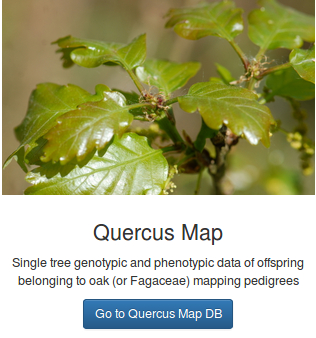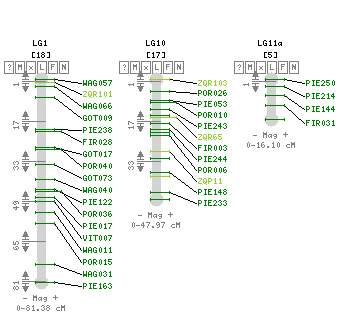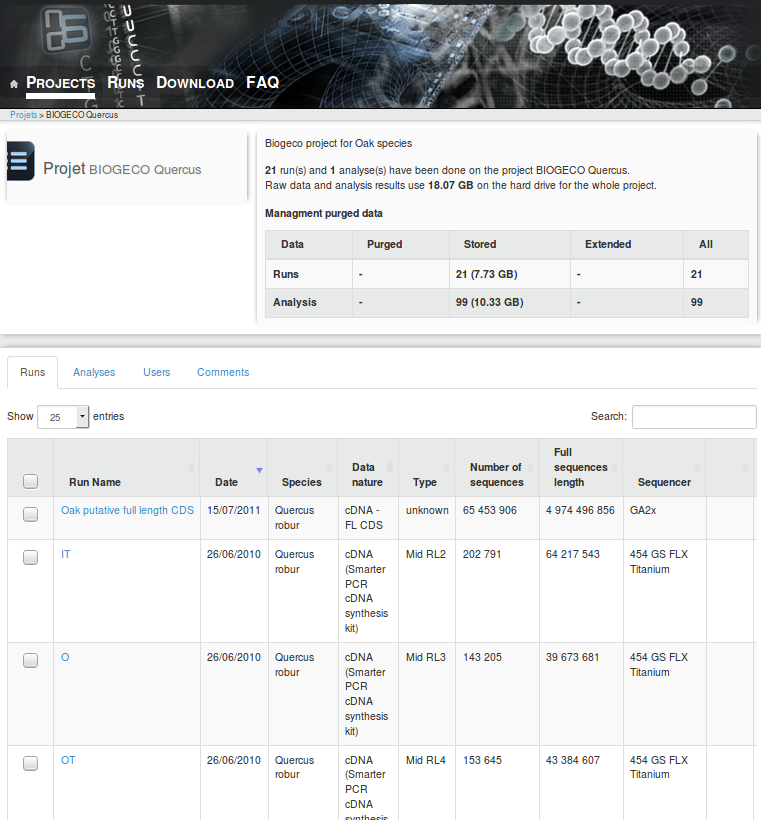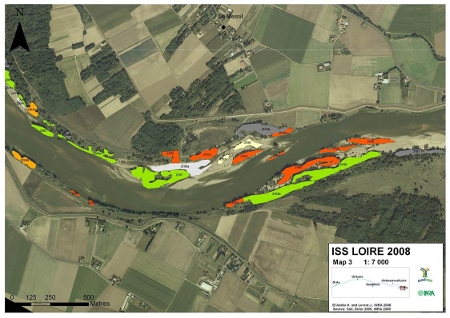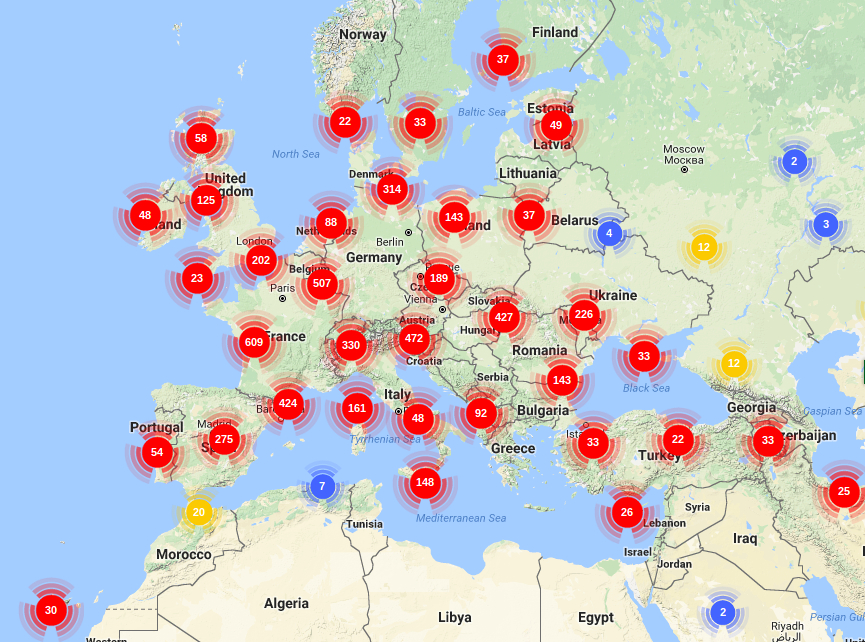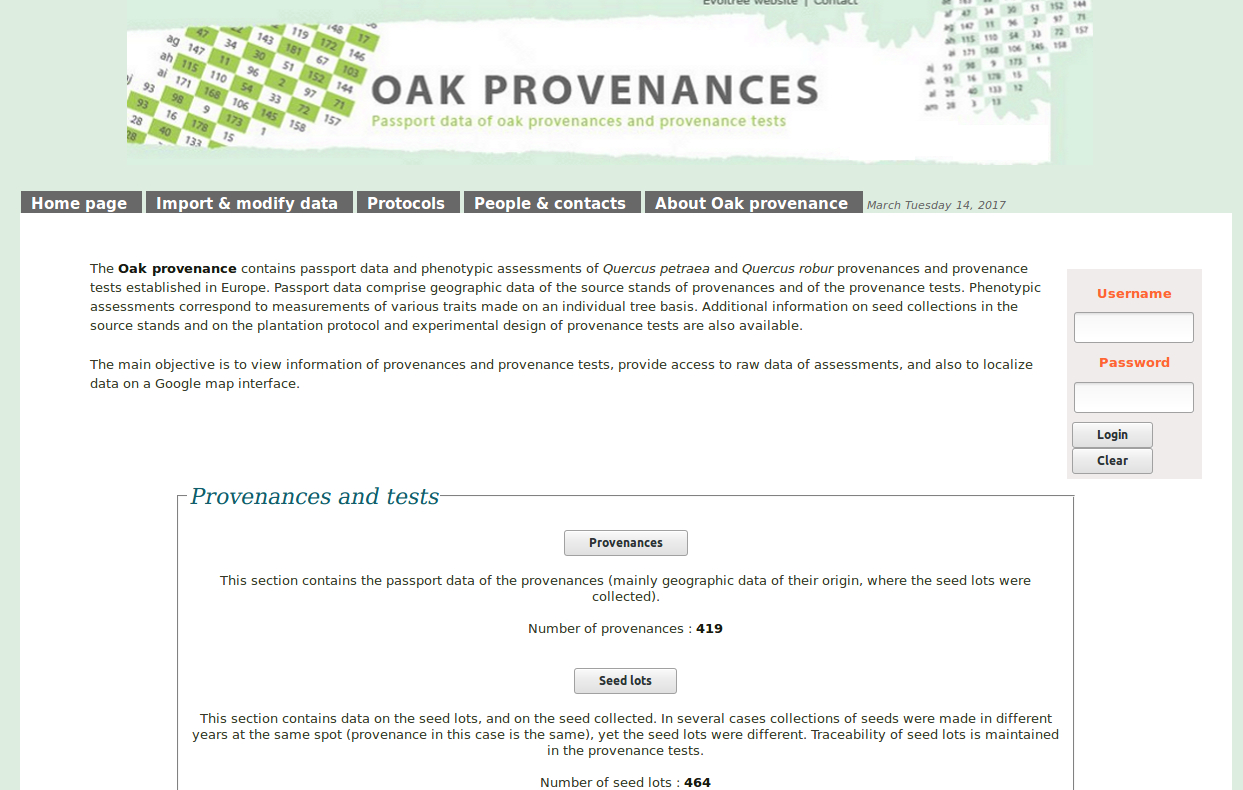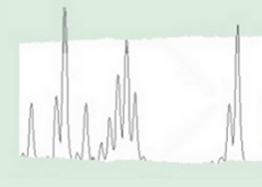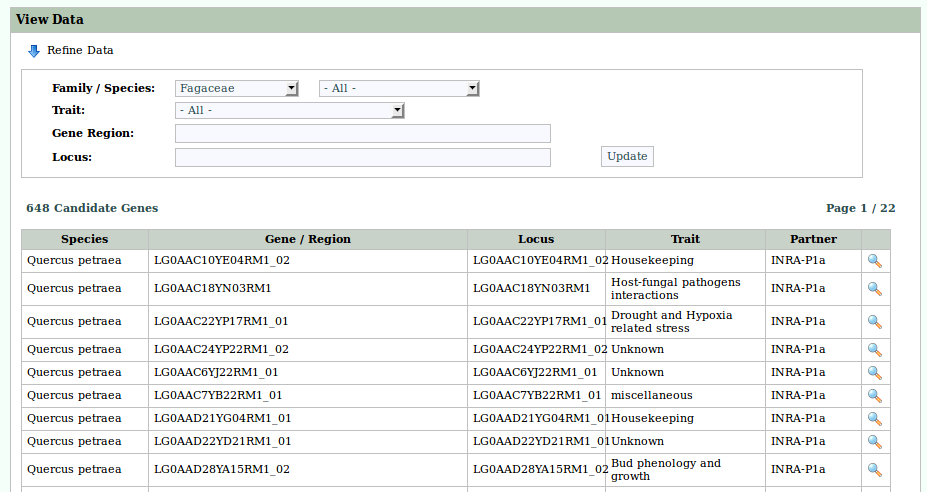GENE FLOW IN OAKS
OAKFLOW : Intra and interspecific gene flow in oaks as mechanisms promoting genetic diversity and adaptive potential
Funded by the EU (QLK5-2000-00960)
1 January 2001 to 30 June 2005
Final report: https://www4.bordeaux-aquitaine.inra.fr/biogeco/content/download/3678/42002/version/1/file/Oakflow-FullFinalReport.pdf
Executive summary
Gene dispersion processes are key mechanisms that shape the genetic structure and diversity of forest stands. Gene dispersal occurs by means of both natural migration of pollen and seed as well as via the artificial transfer of seeds and plants. These processes affect the genetic structure of forest stands and thereby influence their ability to adapt to future changes in the environment. Within the OAKFLOW project natural and artificial gene flow, including interspecific geneflow, was monitored in white oaks (mainly Q. petraea and Q.robur) in different purposely installed study plots across Europe.
Three main objectives were set to the project:
- To trace and quantify gene flow and hybridisation in terms of distances and rates
- To evaluate genetic and ecological consequences of gene flow and hybridisation on the adaptation of oak stands
- To evaluate impacts of gene flow on management rules and silvicultural regimes of oak stands
The following main conclusions can be drawn in regards to the three main objectives of the OAKFLOW project:
- An overall assessment of pollen and seed flow was obtained from the different intensive study plots (ISP) that were installed across Europe under various ecological conditions. Within the size of the plots varying between 4.5 to 50 ha, the pollen dispersal curve followed a negative power exponential function, with mean dispersal distances varying between 47 to 870 meters (and standard deviation from 40 to 2400 meters). However, in more than 60% of the pollination events (from 39% to 88% depending on the ISP), the male parents could not be assigned, suggesting that most of the pollen originates from outside the Intensive Study Plots. These results support the general view that pollen flow is the result of two processes: local dispersion (that has been addressed in OAKFLOW) and long-distance transport, the ratio between both processes amounting to approximately 40/60. Seed dispersal distances varied between 10 to 155 meters, and seed dispersal from outside the ISP was much lower than for pollen (on average 39 %, varying between 15% and 48%).
-
Hybridisation occurred in all ISP, regardless of the density or the census numbers of the different species. The average proportion of hybrids over all ISPs amounted to 17 % (from 1% to 41%). This is however a lower limit of hybridization rates, as it accounted only for those mating events where both parents could be assigned by parentage analysis. These figures do not take into account pollen donors from outside the study plots, as they could not be identified. In contrast to previous papers, there was no preferential direction of hybridisation between Q. robur and Q. petraea.
- In several case studies distributed across Europe, past artificial seed transfer could be identified by chloroplast DNA fingerprints and their spatial structure in the studied stands. These results suggest that the method could be used for certification purposes, if autochthony of the stand is to be used as a certification criteria.
- Genetic maps for Q. robur were constructed in two full sib pedigrees, that were further used for QTL detection. Strong colinearity was found with the map of Castanea sativa, suggesting that the different genera of Fagaceae may share the same genetic system. These results open new perspectives for genetic and genomic research in the Fagaceae
- Quantitative Traits Loci (QTLs) were detected for traits showing interspecific adaptive differentiation between Quercus petraea and Quercus robur : leaf morphology and pubescence, water use efficiency, response to waterlogging. The percentage of phenotypic variation explained by the QTLs remains moderate to low (from 0 % to 12% in general). Interestingly for water use efficiency (as assessed by carbon isotope discrimination (δ13C)), the proportion of phenotypic variance explained by one QTL amounted to 20 - 25% (on linkage group 11).
-
Differentially molecular screening methods were used to identify genes that exhibit different expression profiling between the two species under stressed conditions: hypoxia and osmotic stress. The corresponding genes were sequenced and mapped on the Quercus robur map.
- Results obtained in the project were shared an discussed with end-users (forest managers, conservation agencies). Stakeholders were invited to all project meetings and directed the project towards their needs and most important practical problems. Outcomes of the project , mainly of the gene flow studies, were discussed in regards to two main topics ‘Natural regeneration in common oak stands’ and ‘Design and management of seed and conservation stands’, taking into account the comments and expressions of interest of stakeholders.

